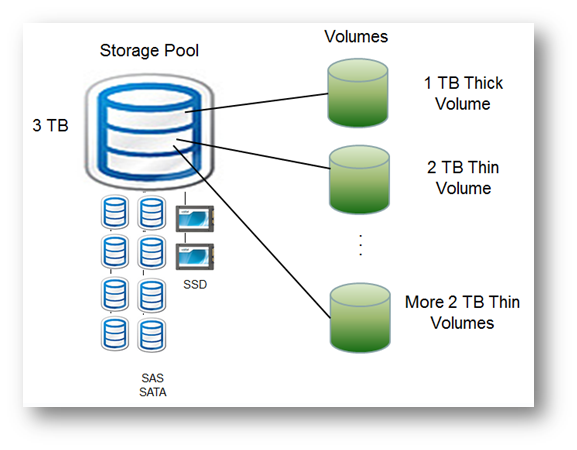Sharing Volumes
Volumes provide a way to allocate storage available in a storage pool and share it over the network.
In the example to the right, the Storage Pool with 3 TB of disk space is allocated from several SAS, SATA and/or SSD devices. There are 3 volumes and like VMDK, a volume can be either thick-provisioned or thin-provisioned. The thick-provisioned volumes cause storage space to be reserved from the storage pool, reducing the amount of storage available for use by other volumes. The thin-provisioned volumes consume actual storage pool space when the data is written to the volume.
So, there is a thick-provisioned volume which reserves 1 TB of the available 3 TB storage pool and there are also 2 thin-provisioned volumes up to 2 TB of thin-provisioned storage space available to each of them.
Configure filesystem volumes for sharing as CIFS Share or NFS Share so that storage is available for use by the applications, servers and clients on the network.
Configure block device volumes as LUNs (block data storage devices), for use with iSCSI targets.
The sections below cover specific tasks, processes, and workspaces common to sharing your volumes on a SoftNAS deployment regardless of platform it is on.
